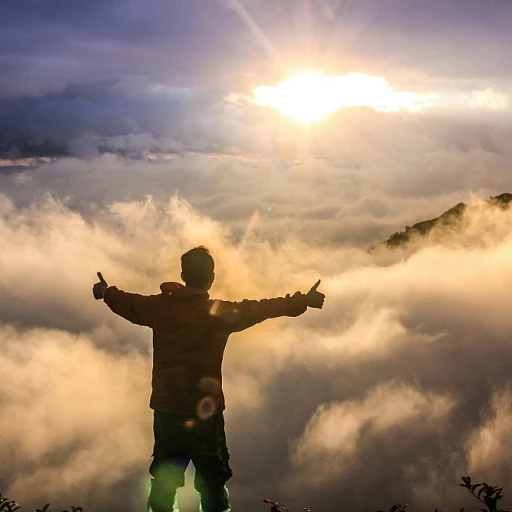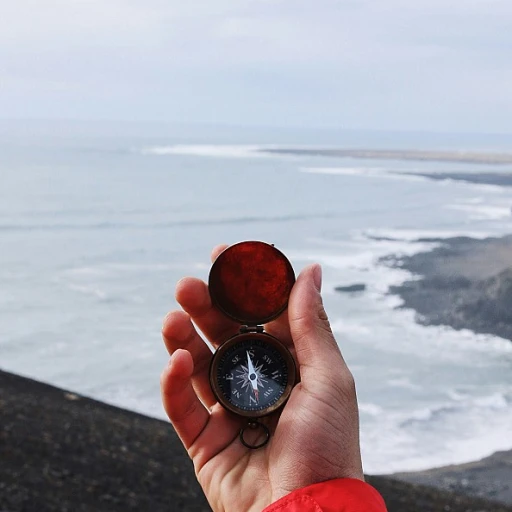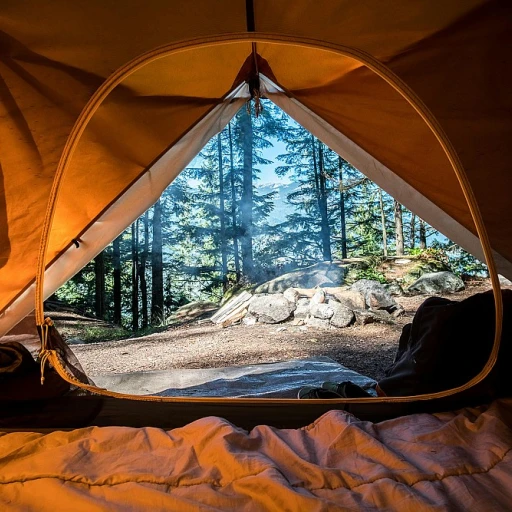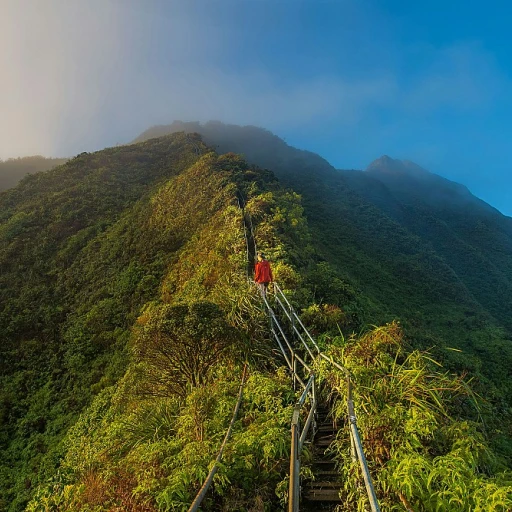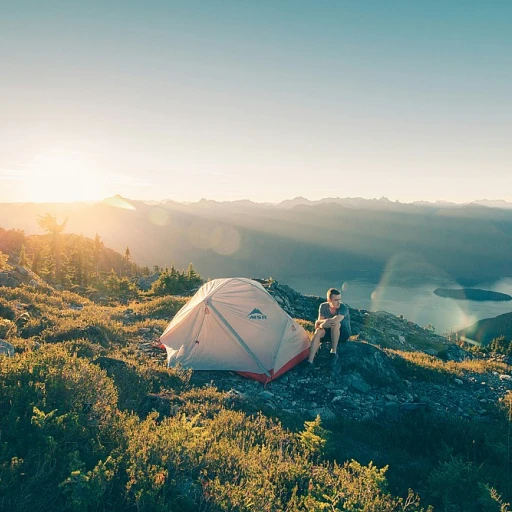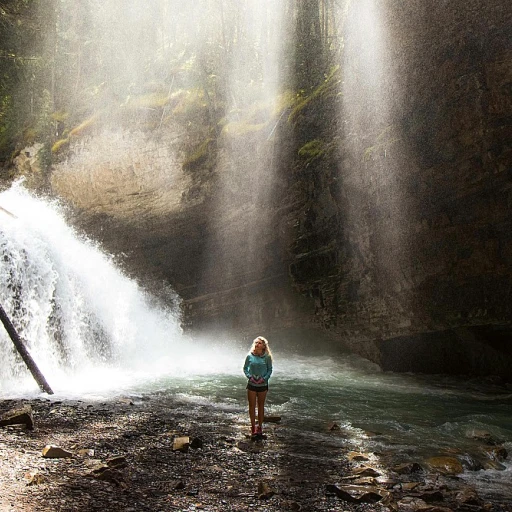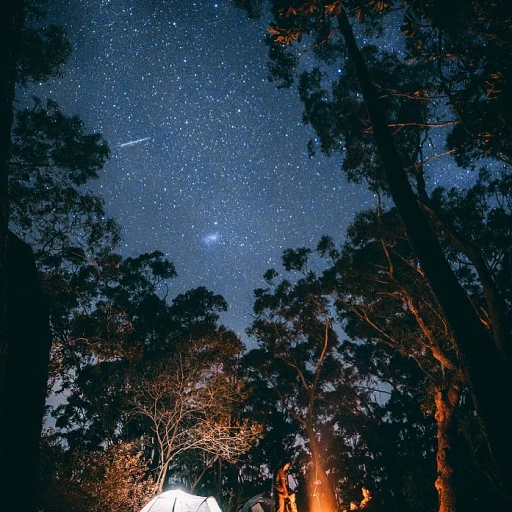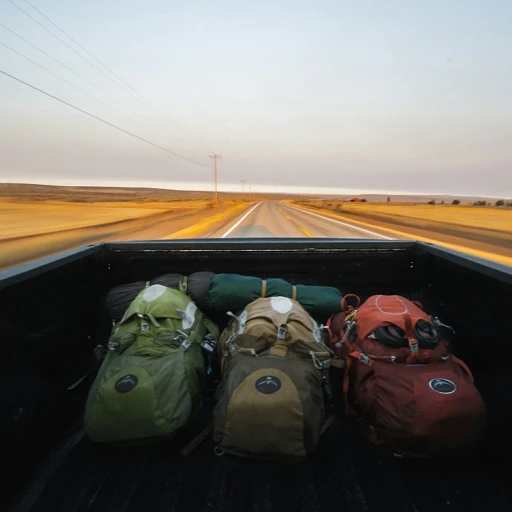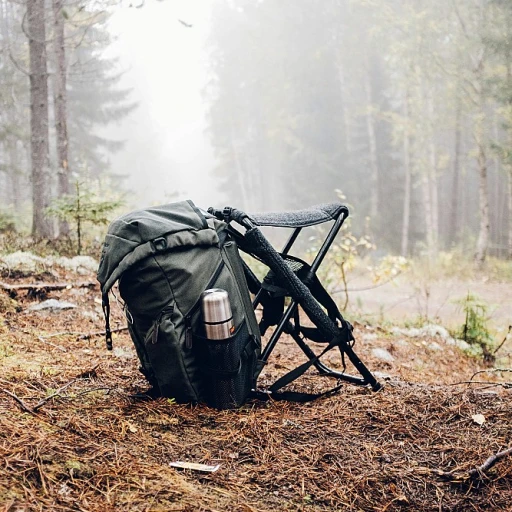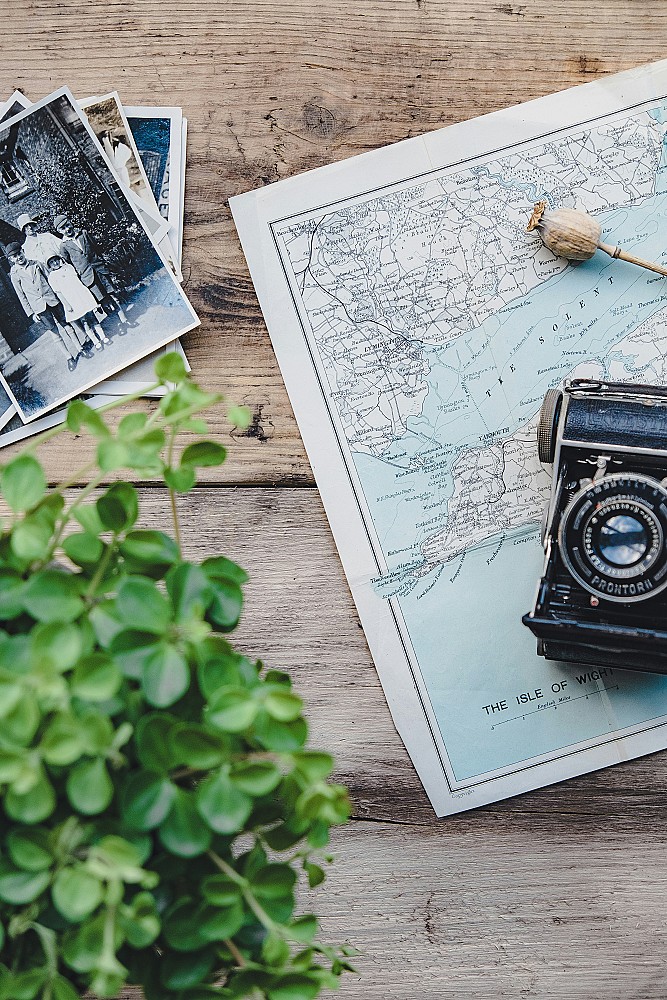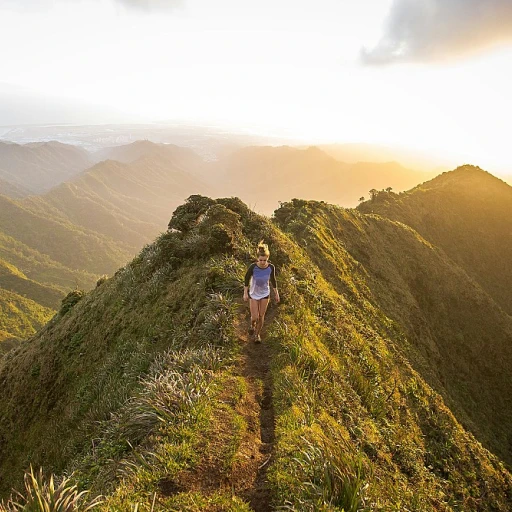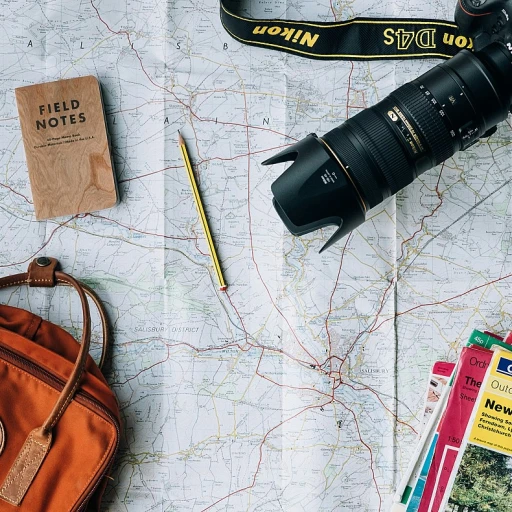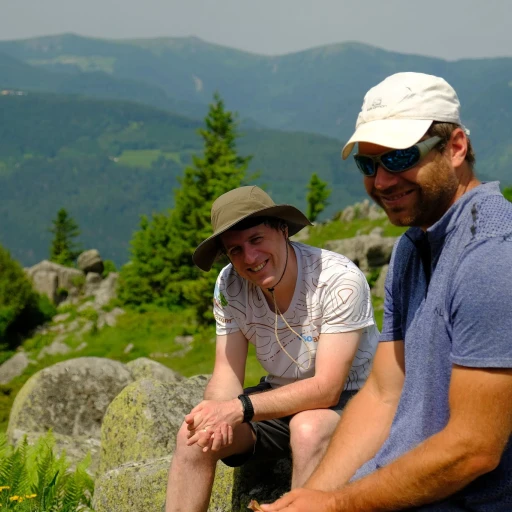
Discovering the superstition mountains
Beginning your journey at the superstition mountains
Have you ever found yourself yearning for an adventure that mixes rugged mountains, intriguing folklore, and spectacular scenic views? Well, let me introduce you to the Superstition Mountains, one of Arizona's true hidden treasures. Located just outside of Phoenix, these mountains are more than just a beautiful backdrop—they offer endless trails, towering peaks, and secrets waiting to be uncovered.
A break from the urban hustle
Imagine stepping away from the city's hustle and bustle, taking a short drive, and finding yourself at the Siphon Draw Trailhead. The moment you park, you're greeted by towering cliffs and a sprawling desert landscape that invites exploration. Whether you're a seasoned hiker looking for a challenge or seeking a peaceful escape for a family weekend, the Superstitions have something for everyone.
The heartbeat of the superstition mountains: the flatiron
Picturing yourself at the base of the iconic Flatiron, you can't help but feel a surge of adrenaline. The Flatiron Siphon Draw trail is not for the faint-hearted, offering a significant elevation gain of around 3,000 feet over a 6-mile round trip. It's demanding yet immensely rewarding, with each step bringing you closer to vistas that seem to stretch endlessly.
Legends and lore interwoven with trails
The Superstition Mountains are steeped in mystery and legends. One of the most famous tales is the Lost Dutchman. According to the lore, there's a hidden gold mine within these hills, and many have ventured into the mountains hoping to find it. While you're on your adventure, you might find yourself retracing the steps of these treasure hunters, adding an extra layer of excitement to your hike.
Preparing for the unexpected
Before you lace up your boots, it's crucial to come prepared. The area can be unforgiving, especially in the scorching summer months. Ensure you have ample water, a map, and let someone know your plans. Safety first, right?
Making the most of panoramic views
As you ascend trails like the Boulder Canyon Trail or the Hieroglyphic Trail, you'll encounter some of the most stunning views surrounding the Superstition Mountains. Each viewpoint offers a unique perspective, whether it's overlooking the sprawling Tonto National Forest, the jagged peaks of Battleship Mountain, or peering down into the depths of Peralta Canyon.
Top trails in the superstition mountains
Exploring the best superstition mountain trails
If you’re an avid hiker or someone new to exploring nature, the Superstition Mountains offer a range of trails that promise thrilling adventures and unforgettable vistas. From beginner-friendly paths to strenuous hikes, there's something here for everyone. Let's navigate through some of the most popular trails in the area.
1. Treasure Loop Trail
One of the best hikes in the Superstition Mountains, the Treasure Loop Trail spans about 2.4 miles round trip with an elevation gain of 500 feet. This moderate trail starts at the Lost Dutchman State Park and offers stunning views of the desert landscape and towering peaks. It's perfect for a morning or afternoon hike, especially during the cooler months.
2. Flatiron via Siphon Draw Trail
This challenging 6-mile round trip hike has an elevation gain of over 2,700 feet. The trek up to Flatiron via the Siphon Draw Trail is not for the faint of heart but rewards hikers with unparalleled views of the entire region. This trail requires good physical conditioning and proper preparation.
3. Wave Cave Trail
The Wave Cave Trail is a moderate hike covering approximately 3 miles round trip. It features a unique wave-shaped cave that makes for an excellent photo op. Remember, the last section of the trail gets quite steep and rocky, so sturdy hiking boots are a must.
4. Boulder Canyon Trail
Boulder Canyon Trail, also known as the Boulder Canyon Loop, offers a challenging 11.2-mile loop trail through rugged terrain. Ideal for experienced hikers, this trail boasts scenic views of Canyon Lake and the surrounding wilderness.
5. Peralta Canyon Trail to Fremont Saddle
A favorite among the local hiking community, the Peralta Canyon Trail to Fremont Saddle is about 4.5 miles round trip. This moderate to difficult hike features a scenic route through the canyon with incredible views of Weaver’s Needle.
Understanding the local climate
Arizona's desert climate can be extreme, so understanding weather patterns is crucial. Check out this article on Sedona weather to grasp the unique climate of the region, as it shares similarities with the Superstition Mountains area.
Stunning waterfalls and hidden caves
The Superstition Mountains are dotted with hidden gems like Massacre Falls, whose beauty can be experienced via the 5.3-mile out and back route known as the Massacre Falls Trail. Similarly, the Hieroglyphic Trail, a 2.8-miles round trip, takes hikers through ancient petroglyphs that tell tales of bygone eras.
Hiking tips from experts
Expert hiker and guide John Greenfield emphasizes the importance of preparation: “Make sure you have plenty of water, a good map, and reliable hiking boots. The desert doesn't forgive mistakes easily.” These tips can make your hiking experience safe and enjoyable.
Preparing for your hike
Get ready for the desert terrain
Before you set out into the rugged expanse of the Superstition Mountains, it's crucial to prepare properly. The desert environment here can be unforgiving, with temperatures soaring high and dropping unpredictably, so making sure you have the right gear and knowledge is key. Unlike the lush trails of the North Cascades National Park, the Superstitions require a different set of preparations.
Carry plenty of water
One of the most critical things to remember is to carry enough water. Experts recommend at least one gallon per person per day when hiking in the Arizona desert. Dehydration is a real threat, especially during the hottest periods. According to a study by Arizona State University's College of Health Solutions, dehydration can impair cognitive and physical performance by up to 25%. So, keep those water bottles filled and make frequent hydration stops.
Wear proper clothing and sun protection
Wearing the right clothing is just as important as carrying water. Opt for lightweight, moisture-wicking fabrics and long sleeves to protect your skin from the harsh sun. Don't forget a wide-brimmed hat and sunglasses to shield your face and eyes. Sunscreen is a must, with experts recommending SPF 30 or higher. A typical day hike like the Flatiron via Siphon Draw Trail, with its elevation gain of nearly 3,000 feet, exposes you to intense sunlight for several hours.
Footwear matters
When tackling the rocky and uneven paths of trails like the Boulder Canyon Trail or the Peralta Trail, proper hiking boots are essential. Invest in a good pair with solid ankle support to prevent injuries. A survey by the National Park Service found that 56% of injuries in the Superstition Wilderness area were due to improper footwear.
Prepare for emergencies
Carry a basic first-aid kit to handle minor injuries like blisters, cuts, or insect bites. It's also a good idea to have a whistle and a mirror for signaling, a map, and a compass. Cellphone reception can be spotty in the more remote parts of the Superstition Mountains, so don’t rely on your phone for navigation.
Freshen up on your wilderness skills
Make sure you know the basics of wilderness survival. Understanding how to read a map, use a compass, and recognize natural landmarks can be lifesaving. Local hiking groups and organizations often offer workshops and training sessions to brush up on these essential skills.
Hiking the Flatiron via Siphon Draw Trail
The challenge of the climb
The Flatiron via the Siphon Draw Trail is not for the faint-hearted. With an elevation gain of over 2,900 feet, this trail is a challenging climb for hiking enthusiasts. The entire round trip is about 5.8 miles, making for a rigorous day hike. The ascent can be incredibly steep, and hikers often find themselves clambering over slick rock faces and navigating narrow ledges. But the reward at the top is truly worth every hard-earned step.
“The view from the top of Flatiron is one of the most breathtaking vistas in all of Arizona,” says seasoned hiker and expert guide, Jennifer Hanson. “You can see for miles, looking over the sprawling Superstition wilderness and far beyond into the desert.”
Preparation is key
Before attempting this hike, preparation is absolutely vital. It's recommended to start early in the day to avoid the scorching heat of the desert mid-day sun. Ensure you have sufficient water—at least 3 liters per person—as there are no water sources along the trail. The trailhead starts at Lost Dutchman State Park, known for its scenic beauty and campground amenities, making it a perfect place to prepare for your adventure.
A study by the Tonto National Forest revealed that dehydration and exhaustion are the most common issues faced by hikers on this trail. Good hiking boots with excellent grip are also crucial for handling the rocky terrain.
Key points along the way
Several landmarks help guide you through this strenuous trail. Starting from the well-marked Siphon Draw Trailhead, the first major waypoint is where the trail begins to steepen dramatically, known as the “slick rock basin.” Here, you’ll find yourself scrambling up a nearly vertical rock face. Moving beyond the basin, you’ll encounter several narrow ledges—exhilarating but not for those with a fear of heights. Finally, the last push to the Flatiron requires some class 3 scrambling, which is the method of using both hands and feet to ascend.
Staying safe
Safety should always be a priority. Make sure someone knows your hiking plans and estimated return time. Cell service is spotty, so don’t rely on your phone for navigation or communication. Maps and GPS devices are invaluable. Hiking in pairs is recommended to ensure that in case of any emergencies or injuries, help is at hand. Always keep track of the time and be prepared to turn back if it’s getting late.
In recent years, rescue missions in the Superstition wilderness have risen by 15%, with 25% of those rescues occurring on the Flatiron trail. Local ranger Jim Carney advises, “Know your limits and don’t push past them. The mountain will always be here, but your safety is paramount.”
Experience unparalleled views
Once you ascend to the summit, the views are unparalleled. To the north, Boulder Canyon stretches out, and on clear days, you can spot Weaver’s Needle and Battleship Mountain as well. The panoramic views of the Arizona desert from the Flatiron are some of the most stunning in the area, providing a serene and awe-inspiring conclusion to the grueling hike. The vibrant colors of sunrise or sunset can paint the landscape in hues of gold and pink that make for unforgettable memories. Remember to pack a camera; you won’t want to miss capturing this natural beauty.
Considering the difficulty of this trail, it’s considered one of the best hikes in the Superstition Mountains for experienced hikers. Check out more hiking essentials and safety gear recommendations for such challenging trails on our dedicated hiking blog.
The lore of the Lost Dutchman
Untangling the enigma of the lost dutchman
In the heart of the superstition mountains, stories swirl around the elusive Lost Dutchman Mine. This legend, rich with mystery, has captured imaginations for decades. Many adventurous souls have braved the rough terrain of the Arizona wilderness in search of this mythical treasure.
Origins of the tale
The tale of the Lost Dutchman begins with Jacob Waltz, an old prospector fondly called 'The Dutchman.' In the late 19th century, Waltz allegedly found a gold-rich mine in the Superstition Wilderness. Upon his deathbed, he passed on cryptic clues about its location, sparking a gold rush of sorts.
Daring endeavours and missing persons
Many have attempted to uncover the Lost Dutchman Mine. Some have even vanished or met untimely ends while on this perilous mission. The Tonto national forest is known for its challenging topography, making search efforts anything but straightforward.
Lingering controversies
The Superstition Mountains buzz with whispers of treasure hunters' fate. Controversies about the mine's authenticity continue. Skeptics argue it's a myth, designed to distract, while believers cite countless search parties fueled by unwavering faith in its existence.
Expert insights and historical research
According to historian Greg Davis, “Although there's no concrete proof, the Lost Dutchman legend holds a significant place in local lore.” A study by the Phoenix Historical Society found that stories about the mine have led to increased tourism, boosting the local economy. In recent years, documentaries and articles have revived interest, encouraging both visitors and researchers to explore these hauntingly beautiful mountains.
Personal experiences
Many hikers report encountering eerie phenomena while traversing the Siphon Draw Trail or Flatiron. Some speak of ghostly whispers, others of fleeting shadows – all contributing to the mythos surrounding this iconic hiking destination. One local named Jack recounts, “I’ve hiked the area numerous times, and each trip leaves me wondering if I’m closer to finding the hidden fortune.”
Immersed in the mystery
Whether you're a believer or a skeptic, the lore of the Lost Dutchman adds a layer of intrigue to hiking the Superstition Mountains. As you navigate trails like the Boulder Canyon, keep an eye out for peculiar rock formations or telltale signs of old prospector routes. The real treasure could be the sense of mystery and adventure that envelops you in these mystical mountains.
Family-friendly hikes and scenic views
Easy trails to explore with the family
When exploring the Superstition Mountains, it's great to know that there are trails suitable for all ages and experience levels. The Hieroglyphic Trail is particularly popular among families, as it offers a gentle hike with a lot to see. The trail stretches for approximately 1.5 miles round trip and showcases ancient petroglyphs created by the Hohokam people. The rock carvings are an engaging educational point for kids and adults alike.
An easy option for stunning views surrounding the mountains is the Dutchman Treasure Loop. This trail spans about 2.4 miles and delivers breathtaking panoramas without requiring intense physical exertion. It's especially delightful during the early morning or late afternoon when the sun casts a golden hue over the entire desert landscape.
Finding scenic viewpoints
If you're in search of a spot that offers a spectacular view without venturing too far, the Massacre Falls Trail is a go-to. This trail offers a moderate hike of about 5.3 miles round trip, leading you through varied terrains, culminating in the sight of seasonal waterfalls. Visiting during the wet months can make the hike even more rewarding.
Another prime location for views is the Fremont Saddle via the Peralta Trail. This hike, though moderate to strenuous, is worth it for the awe-inspiring sight of Weaver’s Needle. The round trip spans roughly 4.8 miles with an elevation gain of 1,364 feet. Experienced hikers might enjoy taking this trail with older kids capable of handling more challenging paths.
Making the most of your visit
Don't forget to check out the Lost Dutchman State Park for more family-friendly options and amenities. The park provides camping sites, picnic areas, and easy access to several beginner trails. It's an ideal base for your adventure in the Superstition Wilderness.
Lastly, always ensure you're prepared with enough water, especially when hiking with children. The desert heat can be intense, and hydration is crucial. By equipped with essentials and choosing appropriate trails, your family outing in the Superstition Mountains can be a memorable and enriching experience.
Wilderness etiquette and conservation
Respecting nature: rules for adventurers in the superstitions
Exploring the rugged beauty of the Superstition Mountains is a privilege, not a right. These trails and natural wonders need to be preserved for future generations. Let's get into some essential wilderness etiquette and conservation tips.
First, always stick to designated trails. It's tempting to blaze your own path, especially when you're chasing those stunning views surrounding the Flatiron or Boulder Canyon Viewpoint. But stepping off-trail can cause serious harm to the fragile desert ecosystem and lead to erosion, which can make trails unsafe for others.
Leave no trace. This means packing out everything you pack in – yes, even those small bits of trash like candy wrappers or orange peels. And while we're on the subject of waste, be sure to use restroom facilities at trailheads whenever possible. If nature calls while you’re miles round trip from a facility, make sure you bury human waste at least 6-8 inches deep and away from water sources.
R-E-S-P-E-C-T wildlife. The Superstition Wilderness is home to a range of creatures, from the majestic bighorn sheep to the petite rock wren. Keep a respectful distance, never feed animals, and store food securely to avoid attracting them to campsites.
Another key rule is to minimize campfire impacts. Arizona's dry conditions often make the area susceptible to wildfires. Always check the current fire regulations before you go. If fires are permitted, use established fire rings and keep them small. Better yet, use a portable stove for cooking.
Group size matters. Larger groups can have a more significant impact on the environment and the experience of other hikers. If you’re trekking with a group, split into smaller groups when possible. Keep noise down to a minimum – it’s all about enjoying the serene quiet of nature.
Finally, respect the cultural significance of the land. The Superstition Mountains hold historical importance for various Native American tribes. It's important to respect any rock formations, petroglyphs, or artifacts you might encounter. Take nothing but photographs and leave nothing but footprints.
By following these simple but vital guidelines, you help to preserve the Superstition Mountains as a pristine wilderness area. This ensures that future adventurers can enjoy the same awe-inspiring hikes and breathtaking landscapes as you. Your small actions make a huge difference in conservation efforts.


